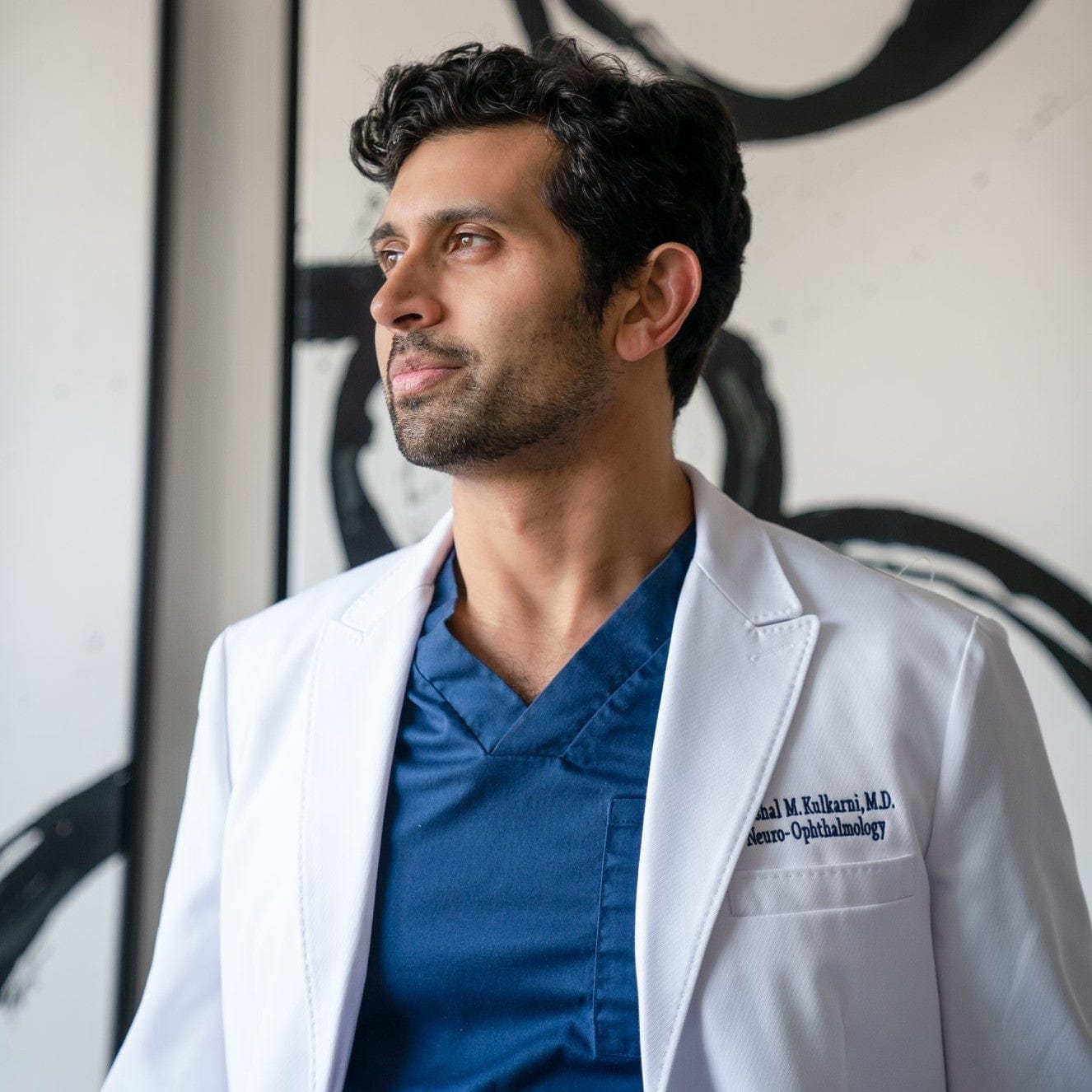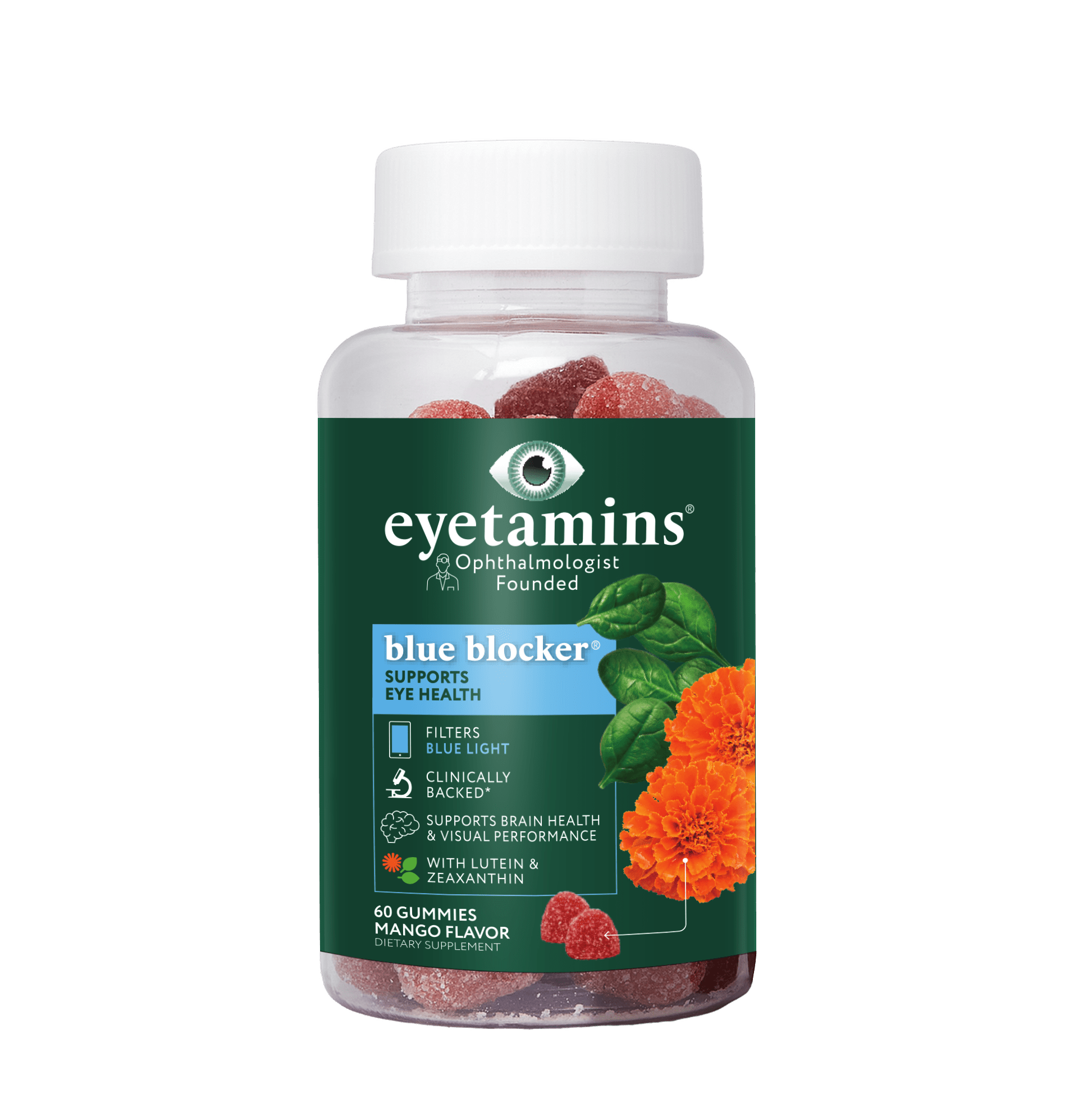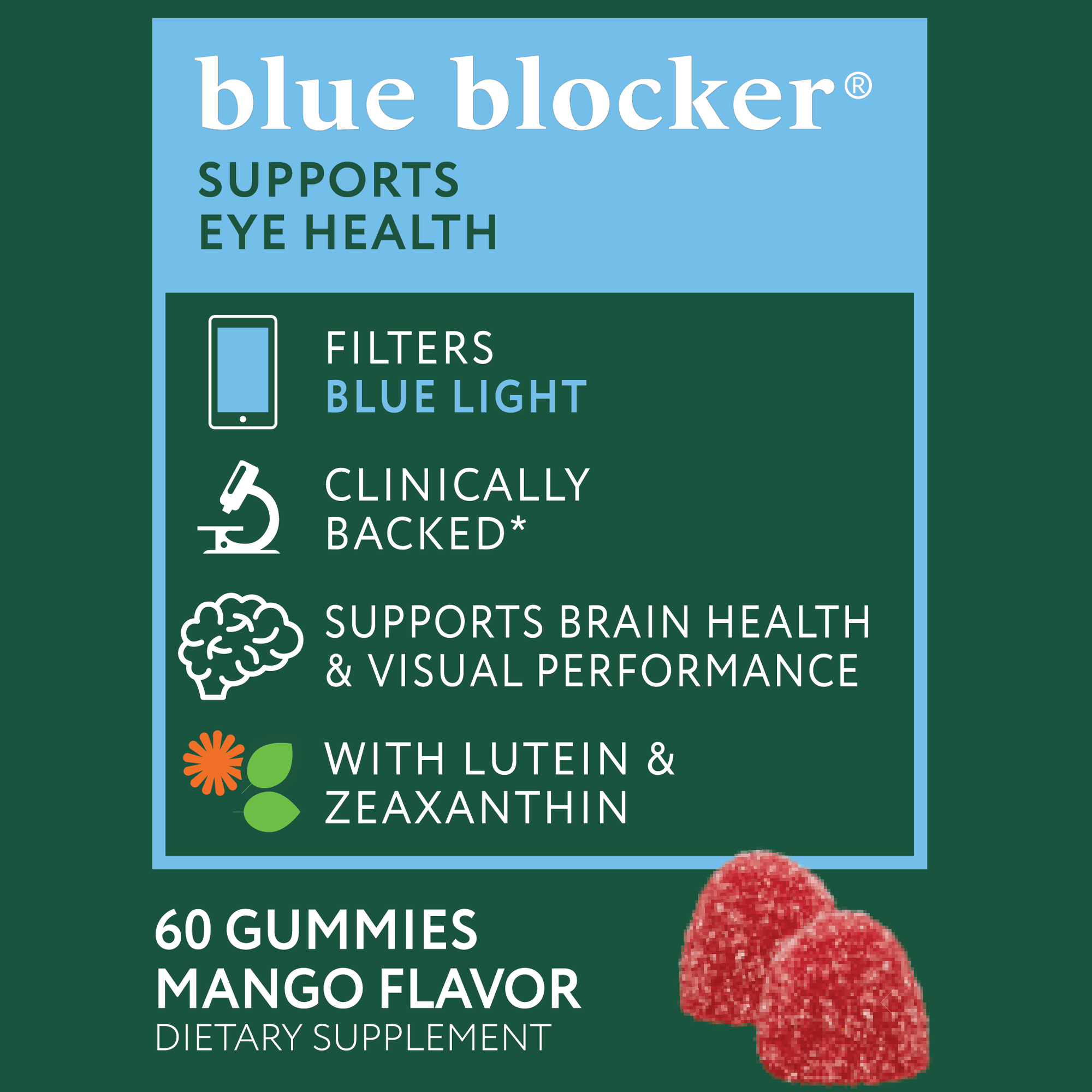· By Dr. Kaushal M. Kulkarni, M.D.
What Causes Eye Twitching?
It starts as a subtle annoyance, but if it keeps on going, it starts to get worrisome. But don’t worry, you’ve come to the right place. Eyelid twitching is very common and is usually benign and temporary.
In this article, we will discuss the causes, including the three most common conditions: Eyelid myokymia, blepharospasm, and hemifacial spasm. We will go into detail about what causes eye twitching in these different conditions. Then finally we will talk about various solutions to help improve or eliminate each condition.

Why Is My Eye Twitching
The most common reason for this occurrence is eyelid myokymia. This phenomenon only affects the lid itself, either the upper or lower lid. There are involuntary fine contractions of usually just one lid, but can be either.
You may barely even notice it, or it could become a bother. It may go away quickly within seconds or minutes, or it can occur over a few hours, days, weeks, or even months at a time. This experience can occur at any age. Rest assured that myokymia is not a harmful condition and will usually go away on its own. Some common triggers of this condition are:
- Alcohol
- Caffeine
- Stress
- Fatigue or lack of sleep
- Bright light
- Smoking
- Irritation of the ocular surface or lids
- Wind or air pollution
Why Does My Eye Twitch
A less common but more severe reason for what causes eye twitching is benign essential blepharospasm. Blepharospasm is characterized as increased involuntary blinking or spasms of both eyelids. It may turn into your lids being squeezed shut. This condition is said to have something to do with an abnormal function of the basal ganglion, a part of the brain that controls the muscles. The exact cause of this is unknown, but the development of the condition may be hereditary.
Besides the gradual increase of blinking or irritation, some people may also feel fatigued, emotional tension, or bright light sensitivity. These symptoms may worsen, and then the development of facial spasms can occur. These symptoms may lessen during sleep or when deep in concentration.
What Does It Mean When Your Eye Twitches
The third reason for eye twitching may be hemifacial spasm. This is a condition where both the eyelid and the face on one side goes into intermittent spasm or contractions. It always affects just one side of the face. This nervous system disorder happens when a small artery is irritating a facial nerve. It can also be caused by a facial nerve injury or even a tumor. There may not even be a cause. The involuntary spasms not only affects the lid but all the muscles on one side of the face. Out of all of the causes of eyelid twitching, this is the most important one to see a doctor about, since you will usually need an MRI or CT scan to rule out a tumor or other serious issue.
Why Does My Eye Keep Twitching
If none of these conditions sound like your case, perhaps your eye twitching is merely a symptom of a larger ocular condition. Some common conditions that can sometimes include lid spasms are:
- Blepharitis
- Corneal abrasion
- Dry eyes
- Uveitis
- Light sensitivity
If none of these sound plausible, there are also a few brain and nervous system disorders that can cause the twitch or spasms, though they will be accompanied by other obvious symptoms. Some of these disorders are:
- Bell’s palsy
- Tourette syndrome
- Parkinson’s disease
- Multiple sclerosis
- Dystonia
- Cervical dystonia
- Oromandibular dystonia and facial dystonia
Additionally, pay attention to any drugs you may be taking, as your symptoms may be a side effect of the medications.

How To Stop Eye Twitching
Now that you know a little bit about the potential causes of this issue, let’s explore how to stop it. As stated before, eyelid myokymia is the most common cause of this phenomenon. Almost everyone has experienced this occurrence at least once in their life. This is a benign condition and can easily be resolved. Follow the recommended treatment below, but if you still do not experience relief, consult a doctor to see if the other conditions mentioned may be the cause.
Eyelid Myokymia: This common condition should go away on its own with the help of rest, stress relief, and the reduction of your caffeine levels. You can also implement magnesium into your diet or try it in supplement form, as that has been seen to help. If the problem persists, you may want to look into Botox as a last resort. You may want to see a doctor if:
- There is still no change in a few weeks
- The lid closes completely with each twitch
- You have trouble opening the eye
- The spasm occurs additionally in other parts of the face or body
- The ocular surface is red, swollen, or has a discharge
- The lids are drooping
Blepharospasm: Unfortunately, there is still no cure for blepharospasm, though there are some things to do that may lessen the severity. Consult your doctor about the following options:
- Botox: The injection of Oculinum (botulinum toxin, or Botox) is an approved treatment for blepharospasm. The botulinum is injected into the muscles of the lids, paralyzing these muscles to keep them from spasming.
- Medications: These must be prescribed by your doctor. The results are often unpredictable, and usually provide only short term relief, and is only helpful for about 15 percent of those afflicted.
- Myectomy: A surgical procedure that has improved symptoms of 75 to 85 percent of people with blepharospasm. This is a surgery that removes some of the muscles and nerves of the lids.
- Alternative therapies: These include biofeedback, hypnosis, acupuncture, chiropractic, and nutritional therapies. They may work but are still unproven.
Hemifacial Spasm: Consult your doctor if you suspect you suspect this condition. The doctor will conduct an examination, which may include the use of imaging tests such as an MRI. Your doctor may even try a magnetic resonance angiogram, which is the injecting of a contrast dye in a blood vessel to look for an abnormality. Here are a few things your doctor may suggest as a treatment for hemifacial spasm:
- Botox: As for the other possible conditions, Botox injections may be used to temporarily paralyze your muscles.
- Medication: Prescribed medicine such as anticonvulsant drugs may relieve symptoms for some people.
- Microvascular decompression surgery: This is a very serious procedure in which the surgeon locates the blood vessel irritating the facial nerve and removes the pressure.












